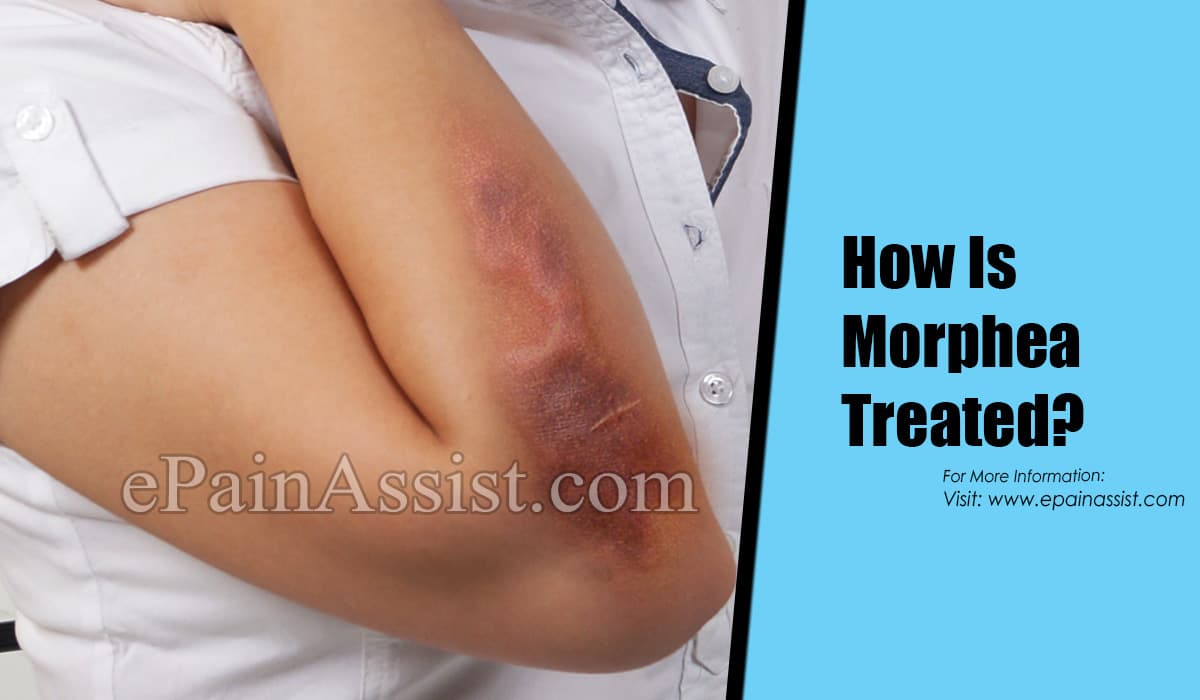How Is Morphea Treated?
Morphea is a skin disease that causes areas of reddish skin that thickens up, it’s a localized scleroderma type. There is actually no cure for morphea, the treatment is mainly to reduce the symptoms or keep them in a control status until morphea goes away on its own (usually takes about 5 years).
Majority of adults with mild forms of morphea can be managed with conservative management, phototherapy, and topical treatment.
Adults with severe forms of morphea with severe disfiguration, joint involvement, and functional impairment need aggressive topical treatment and systemic treatment. Physical therapy and occupational therapy are also important for those with severe morphea to prevent joint and muscle dysfunction.

Phototherapy For Morphea
Phototherapy is one of the effective treatment modalities for the skin lesions. In phototherapy ultraviolet (UV) light is used to treat the skin lesions. UV light has anti-inflammatory and antifibrotic effects. So, the anti-inflammatory action stops accumulation of immune cells at the site and antifibrotic action inhibit the collagen production and reduce the number of cross-links between collagen fibers. This way it reduces the skin lesion associated with morphea. UVA 320-400 nm low dose wave is used for the treatment of morphea. The UVA long wave reaches the deep layers of the skin (dermis) therefore, the treatment is successful and has less side effects compared to the other topical treatments.
Vitamin D Analogs – Calcipotriene (Dovonex) For Morphea
Vitamin D analogs stop the fibroblast activity and the production of TGF-beta and it also has anti-inflammatory properties as well. Calcipotriene is a synthetic vitamin-3 analog it softens the morphea lesions. Photosensitivity is a reported side effect, therefore, avoid excessive exposure to natural and artificial sun after applying the topical cream. calcipotriol 0.005% should be applied twice a day for three months to see results.
Corticosteroids Treatment For Morphea
There are 3 drugs that reduce the inflammation and reduce the collagen synthesis
- Triamcinolone Topical – this is a medium-potency steroid that has anti-inflammatory properties and might prevent morphea progressing towards sclerosis. This should be used daily for 3 months for results.
- Clobetasol Propionate 0.05% Cream Or Ointment – this is in a higher class, it is a superpotent topical steroid and it also has anti-inflammatory properties and prevent morphea progressing towards sclerosis. It should be used daily for one month for results.
- Prednisone – prednisone is used for patients who have severe, widespread and disfiguring lesions. This is an oral drug and has anti-inflammatory properties and prevents morphea progressing towards sclerosis and usually combines with methotrexate for better results. Most patients show a clear improvement in the skin lesions after using prednisone for 18 months.
Antirheumatic Agents – Methotrexate For Morphea
Some of the antirheumatic agents are used to treat morphea. Mechanism of action of methotrexate is by inhibiting the DNA and RNA synthesis in the immune cells, especially the lymphocytes. This cause a reduction in the immune cells, thereby, inflammation is reduced. Most of the time combined with prednisone. Methotrexate is the best systemic drug effective for patients with severe morphea with disfiguring lesions with involvement of the joints. It takes about 1-3 months for the methotrexate to act on the morphea.
Immunosuppressant Agents – Tacrolimus Ointment For Morphea
The exact mechanism of action of tacrolimus is not known, however it reduces the release of certain immune cells that causes inflammation and itching. This is an expensive drug and it is available as 0.03% and 0.1% concentrations. This is used when all other treatment methods have failed.
Conclusion
Morphea is a skin disease that causes areas of reddish skin that thickens up, it is a localized scleroderma type. There is actually no cure for morphea, the treatment is mainly to reduce the symptoms or keep them in a control status until morphea goes away on its own (usually takes about 5 years). Majority of adults with mild forms of morphea can be managed with conservative management, phototherapy, and with topical treatment such as Vitamin D analogs and Triamcinolone topical. Adults with severe forms of morphea with severe disfiguration, joint involvement, and functional impairment needs aggressive topical treatment and systemic treatment with corticosteroids and methotrexate. Physical therapy and occupational therapy are also important for those with severe morphea to prevent joint and muscle dysfunction.
Also Read:
